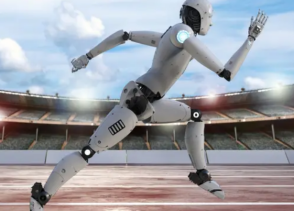人形机器人参赛“半马”,速度挑战一触即发!

China is organizing an innovative race described as a “world’s first” — a half-marathon where humans will go head-to-head with their own creation: humanoid robots.
According to a report, the marathon is scheduled for April in Beijing’s Daxing District. Robots created by tech companies from around the globe will join 12,000 human runners, marking the first time such machines will complete the full race distance this year. This unique competition highlights China’s determined efforts to lead in AI and robotics technology. The 21km (13-mile) course will challenge both humans and robots, with prizes awarded to the top three performers.
Robot Requirements
The Beijing Economic-Technological Development Area stated that global participants — including companies, research institutions, robotics clubs, and universities worldwide — must design robots that:
① Have human-like physical features.
② Use advanced mechanics enabling bipedal (双足行走的) movement (walking/running without wheels).
③ Stand between 0.5-2 meters tall.
④ Operate via remote control or full autonomy. Battery changes during the race are allowed.
Global Robotic Progress
Countries like South Korea have also been actively advancing their robotic creations. Last year, the KAIST-developed robot RAIBO2 finished a full marathon (26.2 miles) in just over 4 hours on a single battery charge, demonstrating significant progress in robotic endurance.
In China, robots are increasingly used in races. Last year, the humanoid robot “Tiangong” served as “closing pacer” to encourage runners near the finish line at a Beijing half-marathon. Another robot cheered runners post-race and even performed a short run in another event.
Strategic Importance
China views humanoid robotics as a key industry for economic development and technological independence, partly driven by technological competition with the United States. Robots are also expected to help address China’s critical challenges: an aging population and a declining workforce. On the other hand, China is increasingly relying on robots to provide support for the elderly. This includes deploying (部署) robots in caregiving roles to provide emotional support, monitor health, and offer smart home assistance to the elderly.
原创编写 版权所有 侵权必究! 每日更新 个性化阅读 英语飙升!